Designing for Different Cultures with Location Demographics
October 17, 2022 2022-10-17 20:40Designing for Different Cultures with Location Demographics

Designing for Different Cultures with Location Demographics
Designing for Completely different Cultures with Location Demographics
Within the context of person interface design, pink sometimes means “no” or “error” in Western cultures. However why can’t it imply one thing optimistic as a substitute? Nicely, truly, in Asian cultures, pink symbolizes longevity, celebration, happiness and prosperity. Brides put on pink clothes at their marriage ceremony, and obtain financial presents in pink envelopes. That’s a far cry from “no” or “error”.
Coloration issues. Coloration has that means. Coloration helps customers make selections quicker, as a result of coloration signifies what the results of an interplay can be.
Contemplate a inexperienced button with the phrase “No”. Now, in Western cultures, that is very complicated, as a result of the inexperienced is indicating “sure” whereas actually saying “no”. If we have been to hurry into this (as customers typically do), we would even click on the inexperienced button whereas fully misunderstanding what it means to take action.
In Asian cultures, pink doesn’t sometimes point out “no”, so utilizing pink in UI design may outcome within the person making unintentional errors. However in fact, there are exceptions. Pinterest makes use of pink of their branding for instance, however we are able to rapidly decipher this since pink is used throughout their web site (brand, icons, buttons, and many others.). Context issues. Additionally, what means one thing in a sure tradition won’t all the time ring true for UI design particularly.
We’ll chat a little bit extra concerning the diagnostic facet of issues later. For now, let’s learn to discover out the place our customers are from, utilizing Google Analytics.
Location Demographics
Within the Google Analytics sidebar the place the 5 varieties of experiences are listed (Actual-Time, Viewers, Acquisition, Habits, Conversions), select Viewers → Geo → Location. As with most experiences, an outline is the very first thing you’ll see. For Geo → Location experiences, this overview is a map.
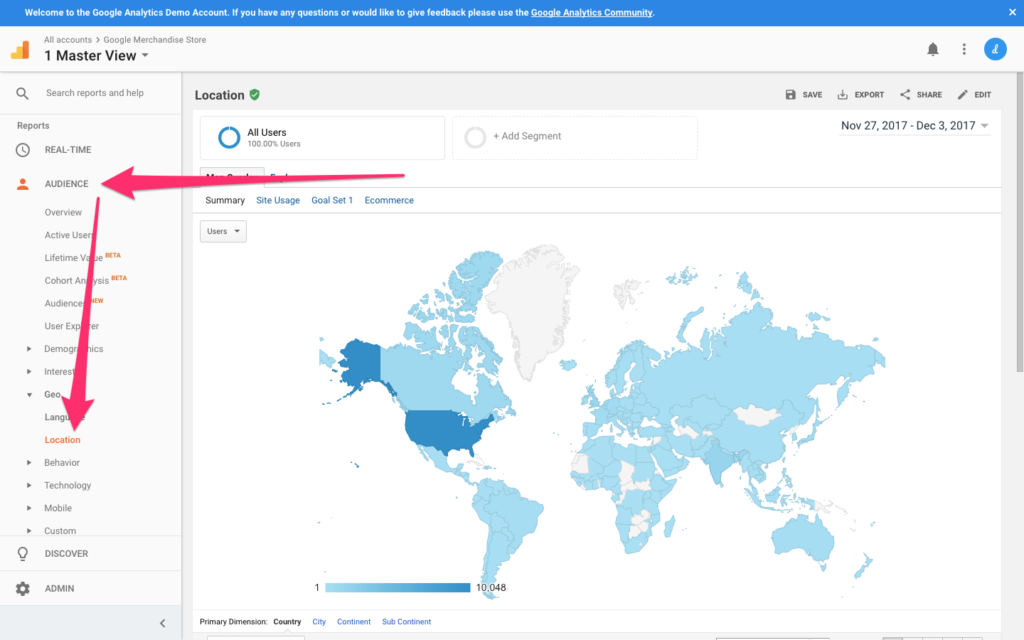
Getting life like knowledge
Earlier than studying the information, you’ll wish to outline an acceptable date vary. Contemplate that 30-day timespan in direction of the tip of the yr that includes not one, however two Western holidays (Thanksgiving and Christmas). Web site site visitors is notoriously low over the vacations, and we’ll wish to analyze knowledge that we all know to be life like. Analyzing knowledge is all the time simpler when the web site in query receives numerous site visitors as nicely.
From the date vary chooser within the top-right nook, select a variety you deem to be acceptable (I might select a current 3-month vary).
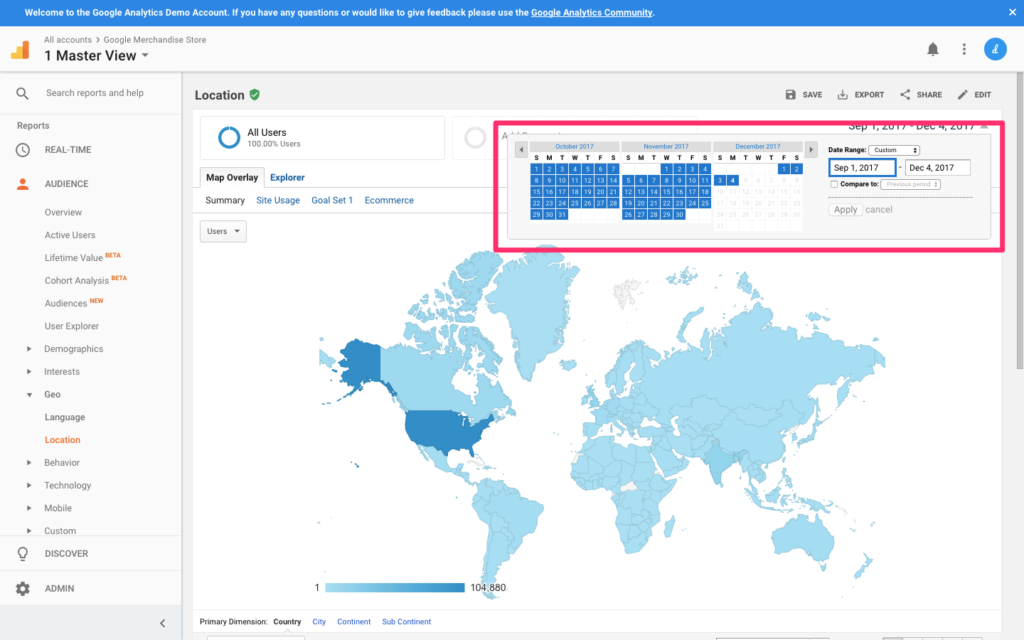
Your first have a look at person location demographics
Though the that means of coloration varies barely from area to area, the core symbolism doesn’t change that a lot. For that reason, analyzing knowledge by Nation may appear a little bit excessive. By Continent may be higher.
Scroll right down to the desk breakdown and choose “Continent” because the Major Dimension. This could make your observations simpler to make.
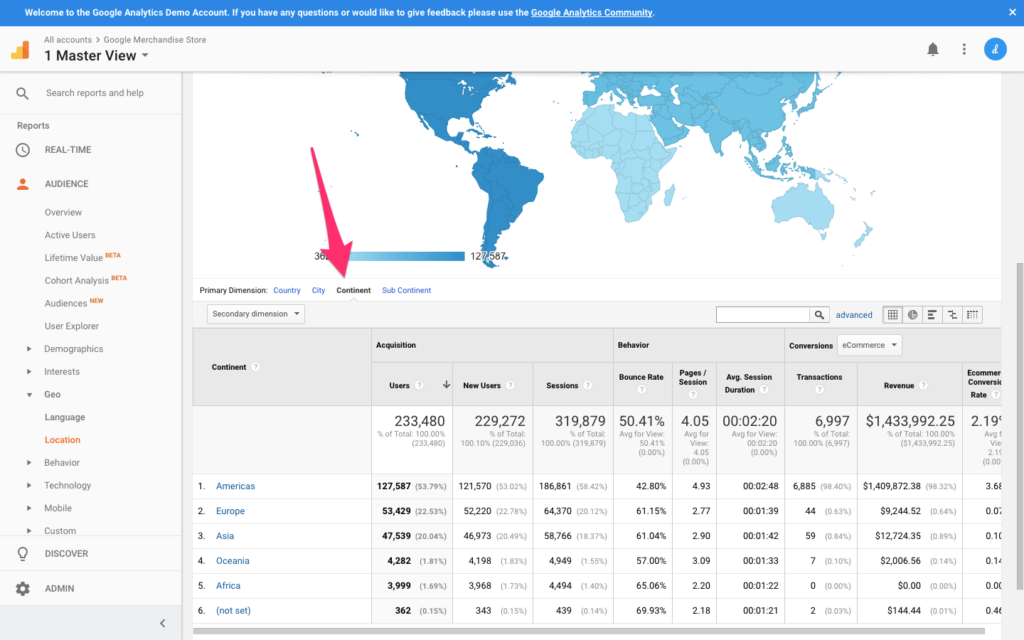
Whereas Americas represents 54% of all customers, Europe is available in 2nd with 23%. We’ll begin by determining if one demographic is clearly having extra hassle than the opposite. Oceania and Africa are the minority at lower than 2% every, so that they shouldn’t be the first concern at first. Asia totals at 20%, with metrics much like these of Europe. Individuals are the commonest demographic.
Let’s concentrate on our two largest demographics.
Which Demographic Is Having Bother?
You’ll be able to establish which dimensions are having probably the most hassle by evaluating sure metrics (corresponding to Bounce Price, Pages/Session, Avg. Session Period, and most significantly, Objective Conversion Price) with different dimensions, and when you’ve completed that, you’ll be able to then start to find the exact second the place these customers are exiting your web site.
Let’s assume that Europe is your lowest-converting demographic. We’ll have to section this dimension, filtering for European customers.
Scroll up and click on the “+ Add Section” button, then “+ New Section”.
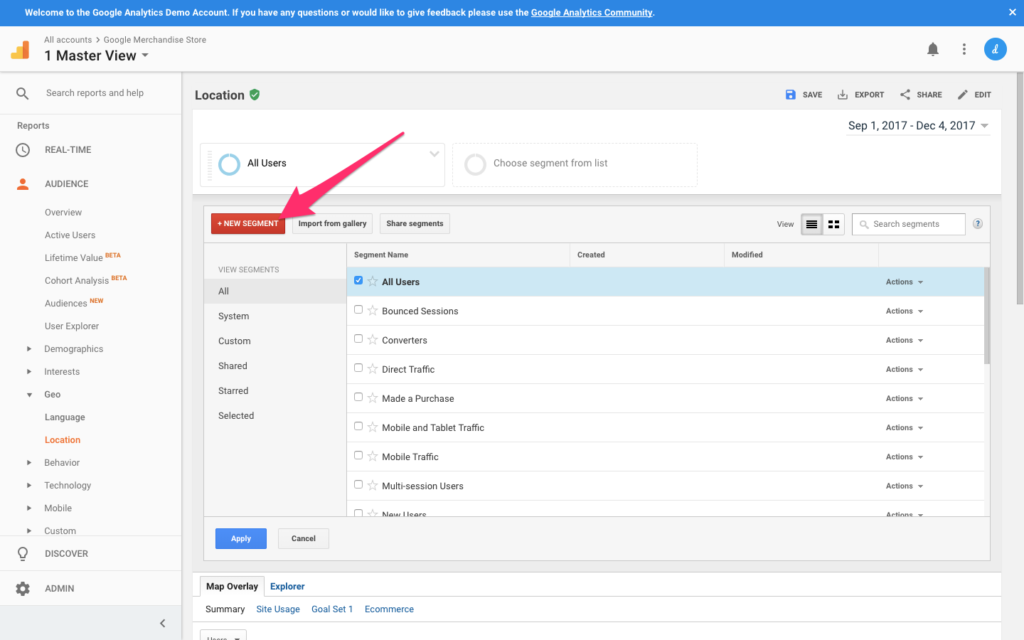
Give your section a reputation — for instance “European customers” — and kind “Europe” into the enter discipline described as “Location” (it ought to autocomplete as “Europe”). Click on “Save” to maintain the adjustments.
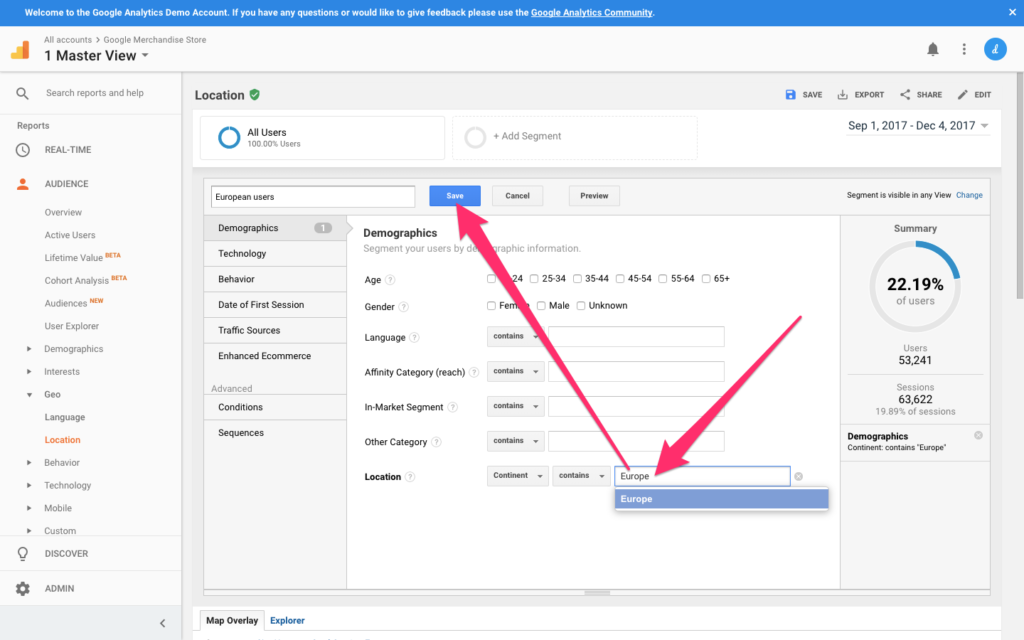
The place Are They Having Bother?
Now that we all know who is having hassle, we are able to discover out the place. Navigate to Habits → Website Content material → Exit Pages from the experiences sidebar, the place the report will point out precisely the place customers are leaving your web site, or extra particularly, the place our lowest-converting demographic is leaving.
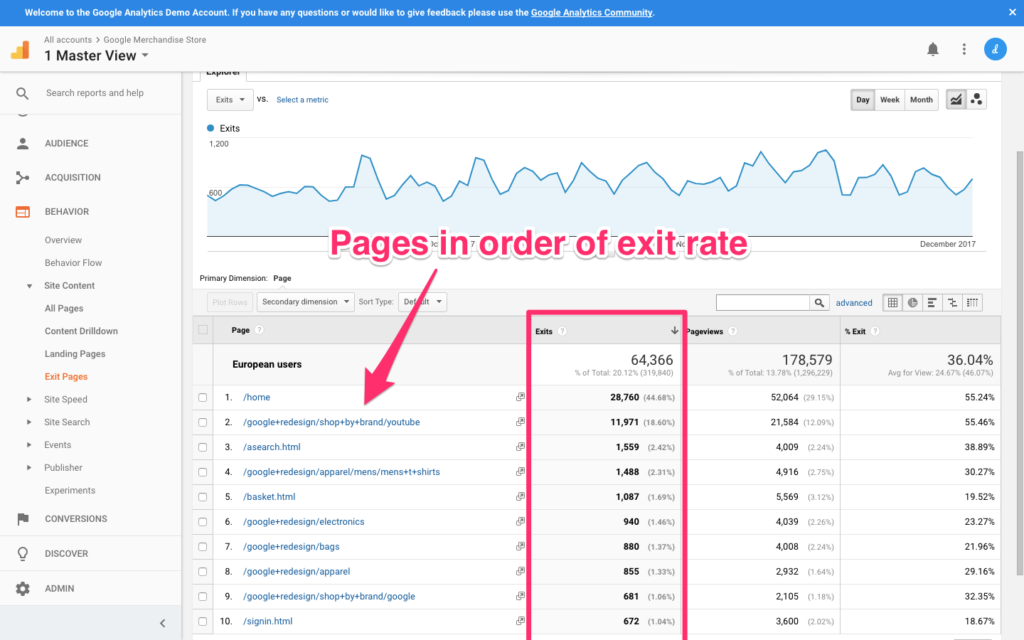
Wait, be careful!
All customers go away finally, proper? So we wish to ensure that we filter out the customers who did convert, as a result of clearly we solely wish to establish those that didn’t, and discover out why. You’ll be able to navigate again to your section and mess around with the section situations. Within the Habits tab from the section customizer dropdown, outline the transaction worth as “0”, filtering out any customers that transformed (we don’t have a difficulty with these customers).
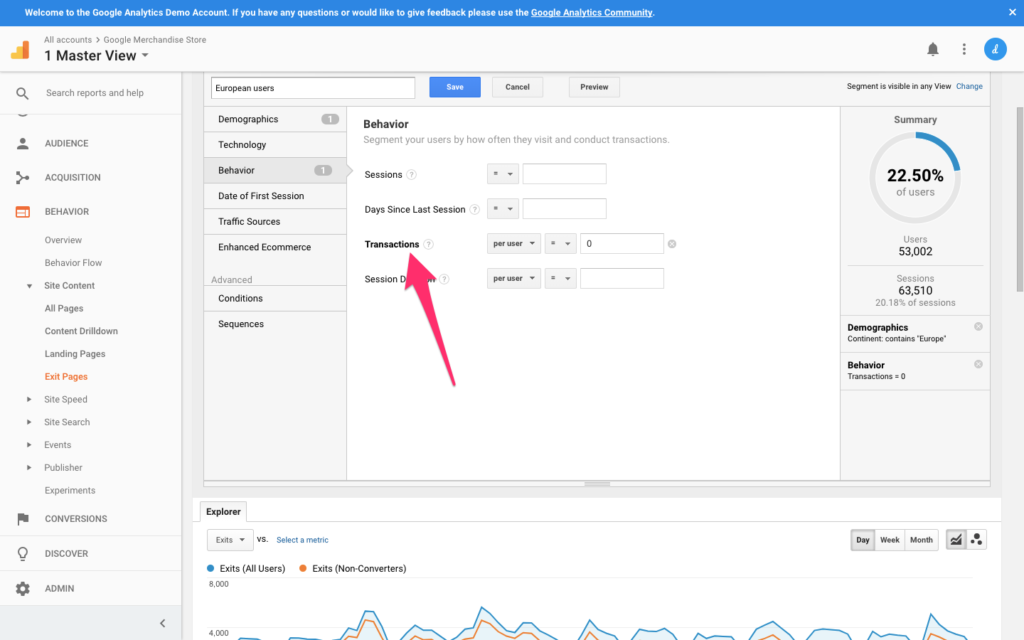
Now that we have now the who, and the the place, we are able to start to search out out why.
What’s Incorrect with the UX?
If one dimension (one continent) is having hassle changing greater than every other dimension, you may wish to take into account the truth that there’s a location-specific problem right here. Now, regardless of what I mentioned about coloration earlier on, there are literally many points that might trigger a sure demographic to drop out of a conversion. Let’s take into account a buyer journey involving the person shopping for one thing (assuming that you just’ve recognized an online web page that’s vital to the shopper checkout journey with a suspiciously excessive Exit Price).
Attainable points which will lead to a non-conversion:
- you’re not utilizing HTTPS/SSL encryption
- prices aren’t displayed within the purchaser’s forex
- it’s not clear what nations you ship to
- colours are making the UI exhausting to work together with
- fee choices are restricted (e.g. PayPal doesn’t exist in all places).
What Subsequent?
From right here, you might be able to diagnose particular UX flaws merely from statement, the place you’ll be able to then make the required adjustments and see if metrics enhance. If the problem nonetheless isn’t clear, you might strive usability testing to assist find it. If the problem is clear however the resolution isn’t, then strive A/B testing.
An analytics-first strategy to design can make sure you’re figuring out flaws within the UX earlier than haphazardly diving into usability testing, and A/B testing the proper issues. Time is effective and restricted, so we don’t wish to waste it.
You’ll be able to try all of the articles in our UX Analytics collection right here.






